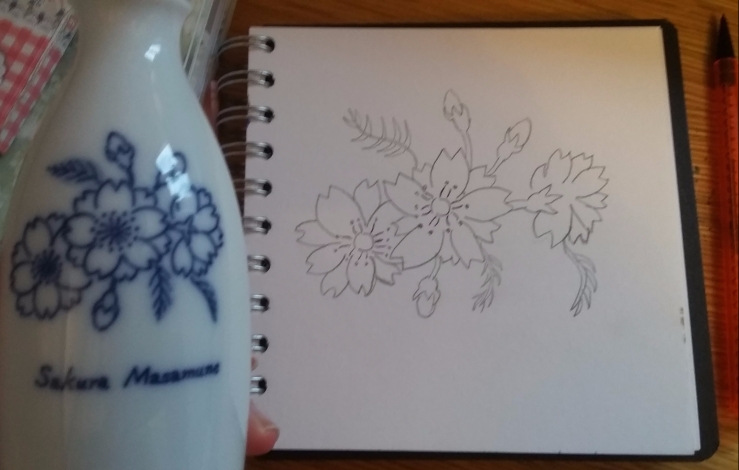So I’ve taken the title of this post from a 15th century Italian treatise Della Pittura (1436) written by Leon Battista Alberti, a typical “Renaissance man” and all-round “man of Letters” and the disciplines that we now know as “sciences”. Alberti wanted to elevate the subject of painting, he wanted more people (ok, more educated men really) to engage with the technical and almost philosophical qualities which he attributed to the painting, and by later association, the artist. Instead of manual labour, painting was to be seen as a scholarly subject, in keeping with the classical trivium and quadvium of ancient subjects (Grammar, Rhetoric, Astronomy, Geometry etc.).

What makes Alberti interesting is that he does for painting what no previous learned man had done. Alberti had also written on architecture, and cited the work of a Roman architect as a model example, thus showing the sort of admiration for classical style that we have come to associate with the Italian Renaissance. Yet Della Pittura was first published in the Italian vernacular, not Latin, a break with scholarly protocol (a Latin version appeared in 1439). This work was intended to reach a more general audience.
After I finished GCSE Art & Design at school I basically stopped sketching and using watercolour paints. I felt like the course had taken up so much of my time that I just didn’t have the energy for it anymore! However, a 3rd-year university module in Art & Politics in Renaissance Florence and Venice, combined with a re-introduction to water colour paints in China last springtime, saw something of a revival in my personal interest.

Seriously, I’m no career-artist, but what I really like about watercolours are that they are so easy to use; you add some water to solid blocks of paint, you can easily mix your own colours, they dry quite quickly, yet not sure quickly that you can’t make last-minute alterations if something isn’t looking the way that you’d like! They’re also very low-maintenance, they just dry back up when you’re done with them, and you can “revive” them months later with a few drops of water! One set of paints isn’t too expensive, and they should last you for years. You can paint onto almost any kind of paper (lightly!) although the thicker the paper, the more leeway you have for making mistakes and wanting to paint over something.
Another thing that I like about this medium is that I feel like it lends itself to natural scenes. Flowers, plants, things that you can see outside any window or in any park. I also really like them for intricate pattern work, because the wash-like nature of the paintings really serves the flow of certain prints.
Over the last couple of months I’ve been really looking for things to do to make me feel engaged and useful. To make me feel like I’m doing something which improves a part of me, and has a tangible outcome. Like a quick, small, watercolour painting, sketched and painted within an hour. Ideas in watercolour paintings don’t have to be perfect or even well-defined. You have time to play with light and shadow later, once the first layer of paint dries. I think that watercolours are great for short-term projects, and my roomate in Jinan used to use them for quickly producing coloured versions of sketches that she’d give to clients of her doll-customisation business!
Next time that you’re looking for something rewarding to do, or just something more meaningful to do with free-time, look back to what you enjoyed in childhood, or maybe even school. Even though exams took the enjoyment out of it then, it’s never too late to turn back. If you practice something enough, and regularly, you’ll improve regardless, so you’ll definitely make progress. Finding (or restarting) a new hobby changes the way that you see the world, and this springtime I’ve never been more aware of how quickly the landscape is changing or how huge the number of different place species is, even in the middle of a city. Painting or drawing again might feel childish at first, but there’s a lot to be gained from looking at the world with a fresh, child-like level of exploration again.




[…] Hertford House is the ancestral home of the Seymour family, the Marquesses of Hertford. In 1900 the 4th Marquess of Hertford bequeathed his family’s collection to the nation, on the condition that no item in Hertford House can ever be loaned or taken elsewhere, away from the collection. If you’re thinking that the paintings of the Dutch Masters (Rembrandt) and Canaletto (Venetian canal scenes, painted in a distinct style by Giovanni Antonio Canal) aren’t really your thing, then you can also see the portrait The Laughing Cavalier (1624), which has inspired several memes. Personally, I prefer watercolours. […]
LikeLike